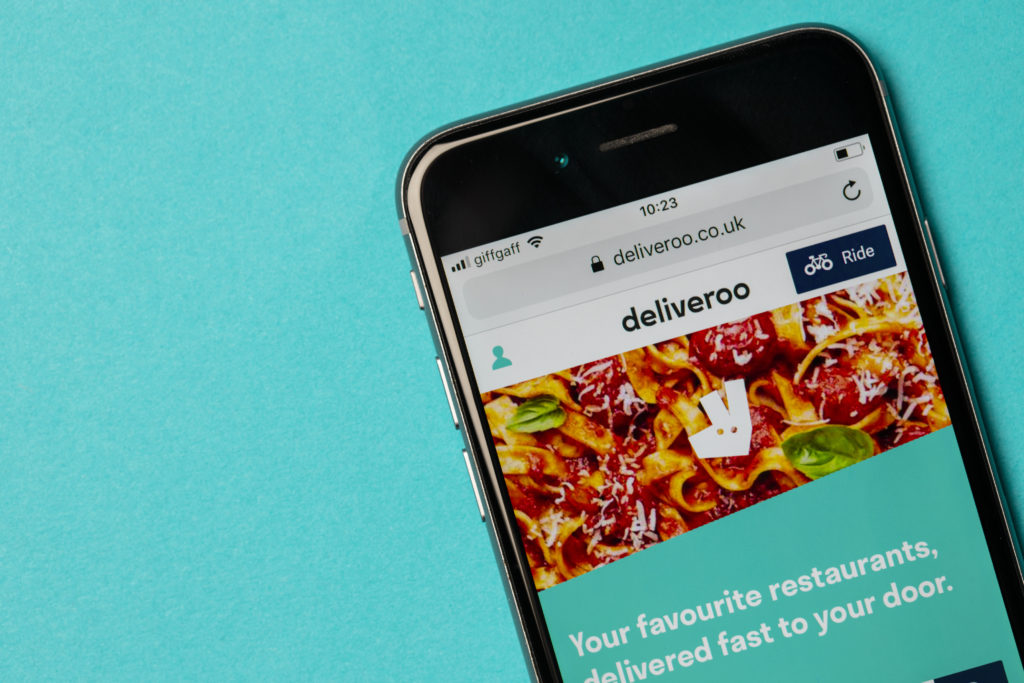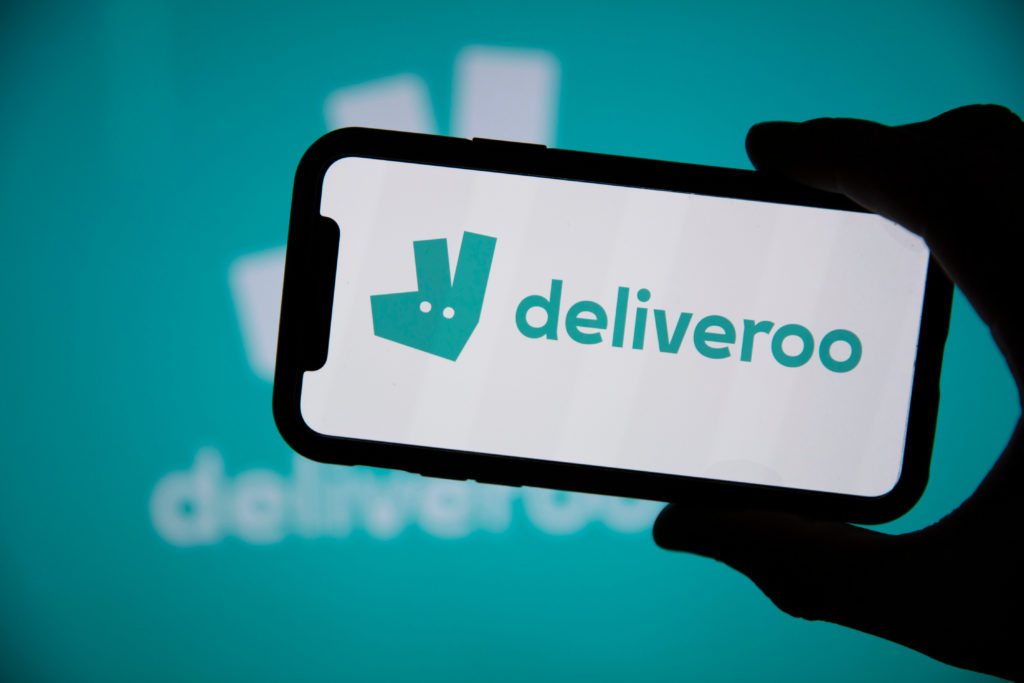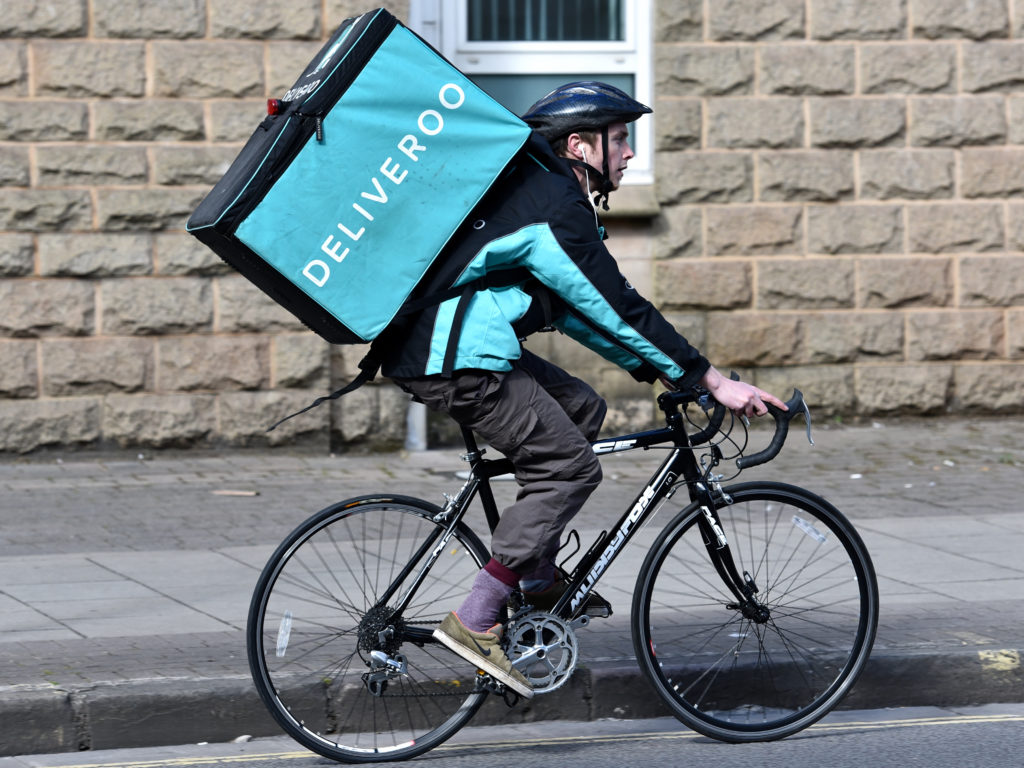
- Products
- Solutions
- Learn
- Partner
- Try Now
The Who and the What
Who are Deliveroo? Well, feigning ignorance about them in the on-demand world would be problematic. Deliveroo happens to be one of the most efficient food delivery companies, based in London. The UK has one of the most favorable on-demand markets and this startup has just been valued at one billion. A unicorn class business, one of the few to reach this hallowed status.

Recently, the series E funding saw a fresh influx of funds, namely $275 million. Companies like Bridgepoint Capital have been significant investors. With others like General Catalyst and DST global being generous contributors in previous rounds. The company declares to have raised funds amounting to $465 million to date, a staggering amount by any measure.
Here’s a look at why they’re such a lucrative option for investors and customers alike.
In the restaurant delivery business, there are many types of models that can be engaged with by a company seeking to establish itself. Some companies own assets on the ground in the form of restaurants and have their own delivery fleets to do the logistical job. Yet other companies are take-away exclusive. The third kind links the restaurant to the logistics fleet and then the consumer, facilitating all-around involvement.

Deliveroo is the third kind, and this works to their advantage. Certainly, logistics is a difficult business to handle. If done right, however, then restaurants that previously did not even have delivery options solicit the power of such services to get their products across.
Deliveroo is also niche. Most delivery outfits serve fast-moving food which is often not of the ‘gourmet’ variety. On the other hand, the ones that do specialize in these services do not provide a delivery window. Your steak comes in an hour late, and perhaps not in the best of conditions. Deliveroo solves this by making a bold claim. All deliveries under 32 minutes.
Deliveroo also specializes in tying up with high-grade, ‘premium’ restaurants that do not have another method of expanding their clientele (their focus is often on the in-house restaurant environment).
So how do they manage to get on with this audacious 32-minute promise?
Bootstrap and Learn
Company founder William Shu is an extremely enterprising man, particularly when you get to know that he was the company’s first delivery boy. While Shu admitted to Forbes Magazine that he did not have any technical know-how of logistics. Being on the delivery runs certainly helped him – nearly 6 hours of toil a day in the suburbs of bustling London.
- Now, Deliveroo has more than 300 employees in the London office with a delivery fleet of more than 5000 agents – this growth has taken place in less than three years of operation.
- The company has recorded growth rates of 400%; it also has a presence in over 29 new cities and has signed on 9,000 new restaurant partners in a mere 8 months.
The company actually booked losses of £1.4 million in 2014, but that was also allegedly due to aggressive demand and growth. The sort which a company has to slowly accommodate for to reap the rewards. Shu insists that his company is every bit, if not more lucrative than Uber. Whose own aggressive expansion has been the stuff of on-demand folklore.
The key to this growth has been Shu’s aim to provide the most high-quality delivery system to the consumer – an obsession with the logistical machine.
In essence, Deliveroo happens to be a company that aggressively focuses on fine-tuning the logistics process like none other. Its hyperlocal, ‘zonal’ mode of operations ensures a fine-tuned mechanic that is augmented by technology.
Revenue and Hyper-fine Logistics
Deliveroo uses a combination of old-fashioned ingenuity with avant-garde technology to maintain its superiority in what can only be called a cut-throat market.
With competitors like JustEat and Delivery Hero has been in the business for a while, there are newer, formidable players on the block. Uber, having faced significant losses after the Didi Chuxing episode in China. Now focused its veritable resources in all other on-demand sectors. The food delivery sector is no stranger to this. UberEATS is already competing with Deliveroo in several European regions and even Amazon (with a project called ‘Hot Wheels’) has joined the fray.
Thus, Deliveroo obviously needs to be at the top of their game.
For revenue, they charge a flat out of £2.50 to the customer for delivery through their smartphone app. Also, take a commission from the restaurant itself. Commissions are generally in the 10% bracket, with the average order being £30 – very profitable, if delivery is optimized.
Thus, time is again of the essence here. Deliveroo stations drivers within a 2.2km radius of the hotels they sign up for, making collection and dispatch very convenient. Drivers are said to make 3 trips an hour, which stacks up exponentially in terms of commissions and charges. They possess drivers with both, bicycles and scooters for variation and added speed if needed.
From the time a dish gets cold, to the kind of packaging that is needed for hitch-free transport. To ambient weather conditions, routes and sub-routes, traffic movement, and daily behavior. Shu’s team crunches some serious data to arrive at the scheduling. They do to maximize efficiency, making hyper-fine adjustment for a powerful logistics plan.
- An optimistic approach would be to understand that specializing in one aspect of businesses. Perfecting it is more prudent than trying to immediately diversify, getting stretched far too thin.
- Hyperlocal is the way to go, certainly. Proving your mettle and failure, all can be learned from in a smaller area of focus as compared to losing time and resources over larger areas.
Logistics is a key sector in the on-demand economy, with ‘doorstep’ being a key branding term.
The future for Deliveroo:
The 32-minute promise has now seen an evolution due to the concept of Q-commerce (Quick commerce) in 2021. Deliveroo is the newest firm to join the supermarket Quick commerce industry (Q-commerce). A new project that allows users to buy groceries and have them delivered to their door.
Deliveroo Express Mart and the business stated that it now collaborates with ‘convenience-led partners’ such as 7Eleven, Marks & Spencer, Shop Kitopi, Circle K, IKEA- Swedish Food Market, Quality Food, and 800Pharmacy.
Grocery deliveries are now available through the app, where orders are assigned to a Deliveroo rider who deliversthem in20 minutes.
“At Deliveroo, we listen to our consumers and pride ourselves on keeping up with consumer trends,” said Anis Harb, General Manager, Deliveroo UAE. The worldwide epidemic has occurred.
What is Quick-Commerce?
Quick commerce is the next phase in the growth of eCommerce, and it is all about speed, as the name implies. Quick commerce typically indicates that customers may anticipate their orders to be delivered within one hour of placing them.
Although this appears to be a very short time frame, quick commerce is generally reserved for minor orders rather than the weekly food buy. Customers may buy a product that they suddenly ran out of or an ingredient for today’s supper.
Retailers rely on online ordering systems, local warehouses, and a two-wheel delivery team to get their purchases out as quickly as possible.
When you step back and think about it, quick commerce is nothing new. For many years, it has been utilized in the fast-food industry. With eCommerce businesses continuously reducing delivery times, it was only a matter of time before customers could have additional items delivered to their homes without delay.
Subscribe to stay ahead with the latest updates and entrepreneurial insights!

Subscribe to our newsletter
Get access to the latest industry & product insights.






















